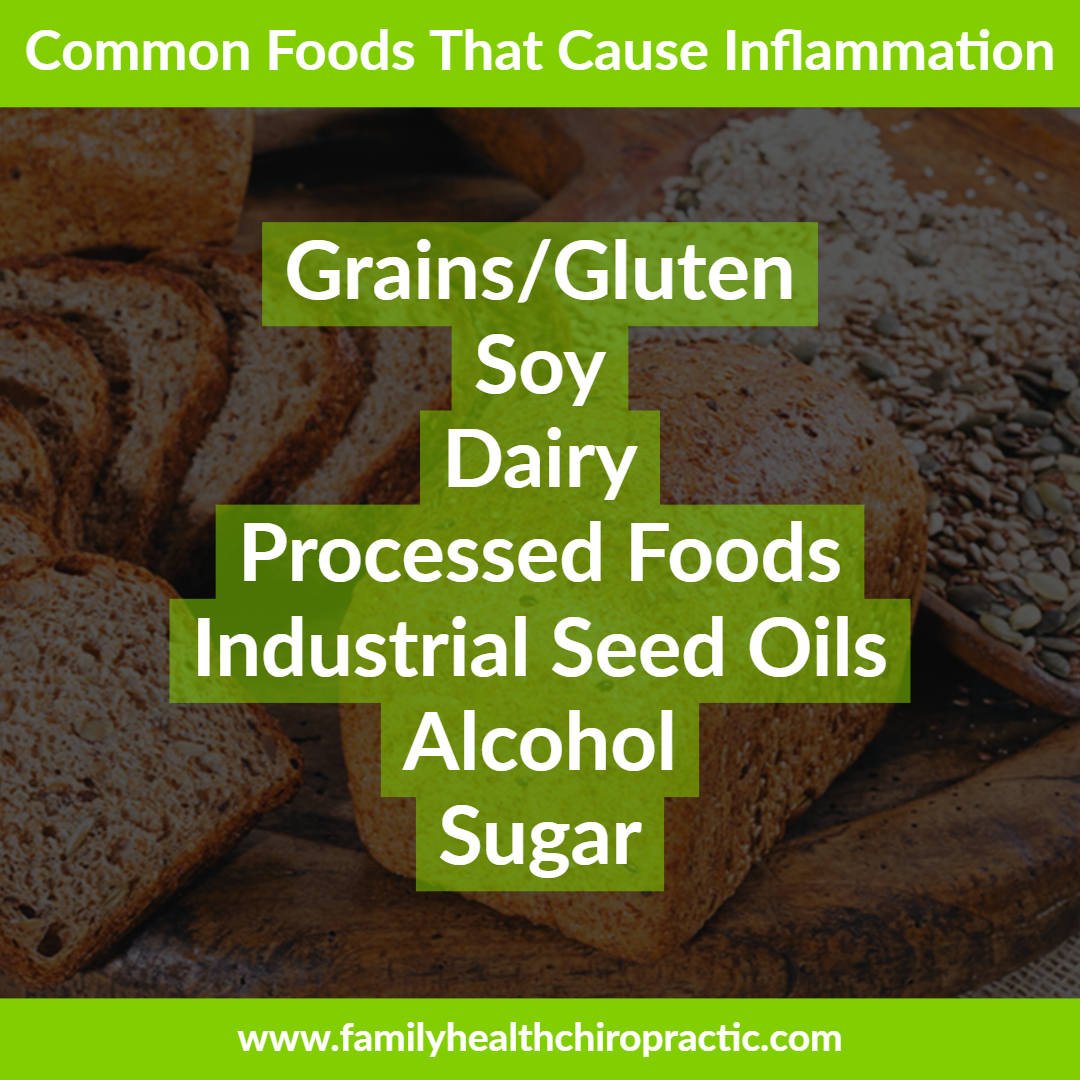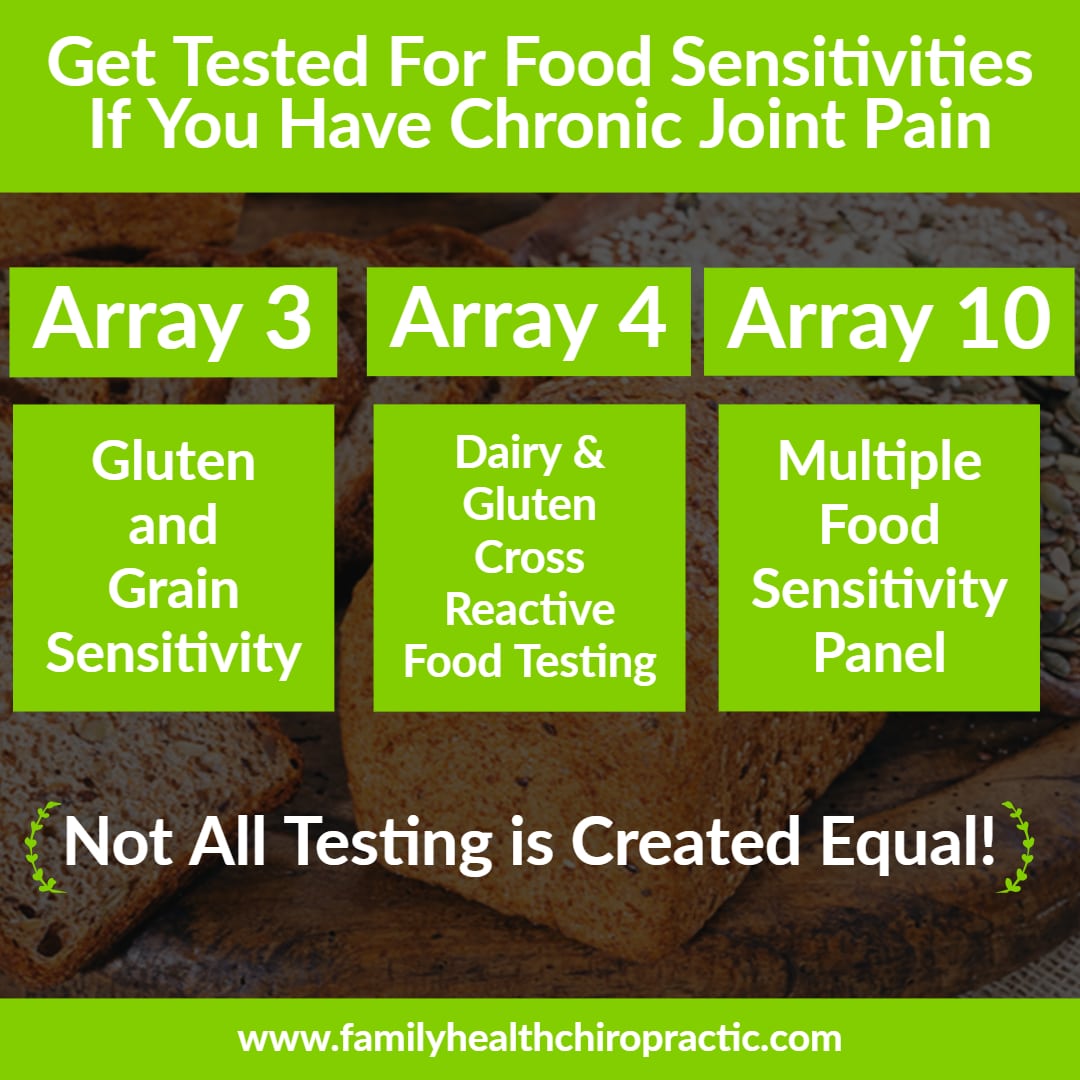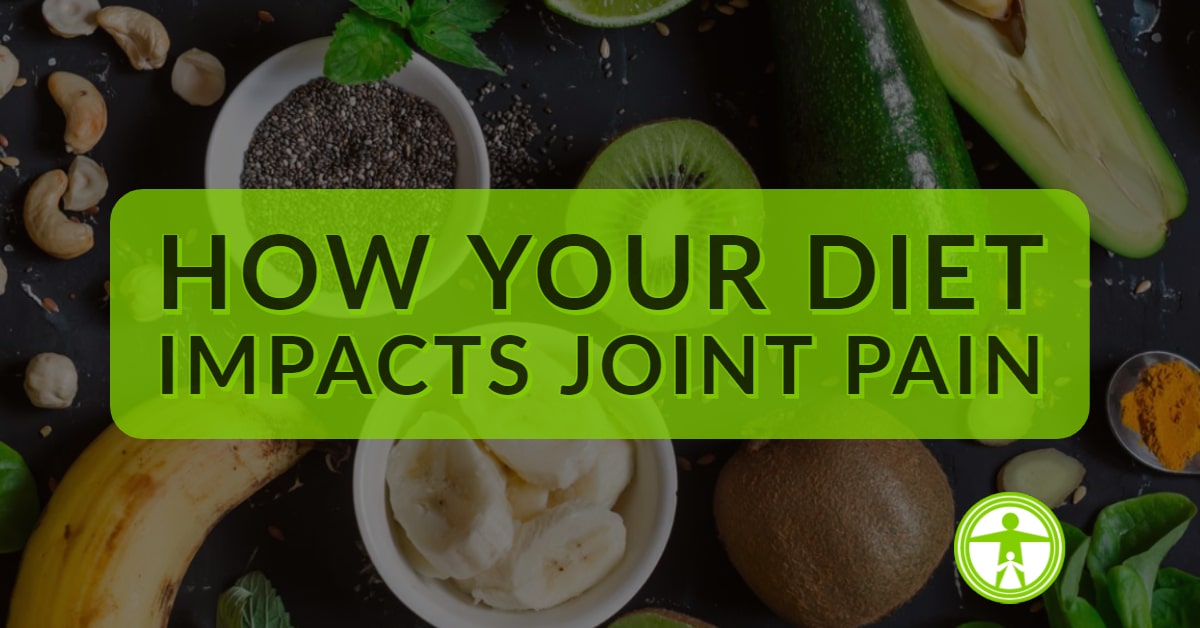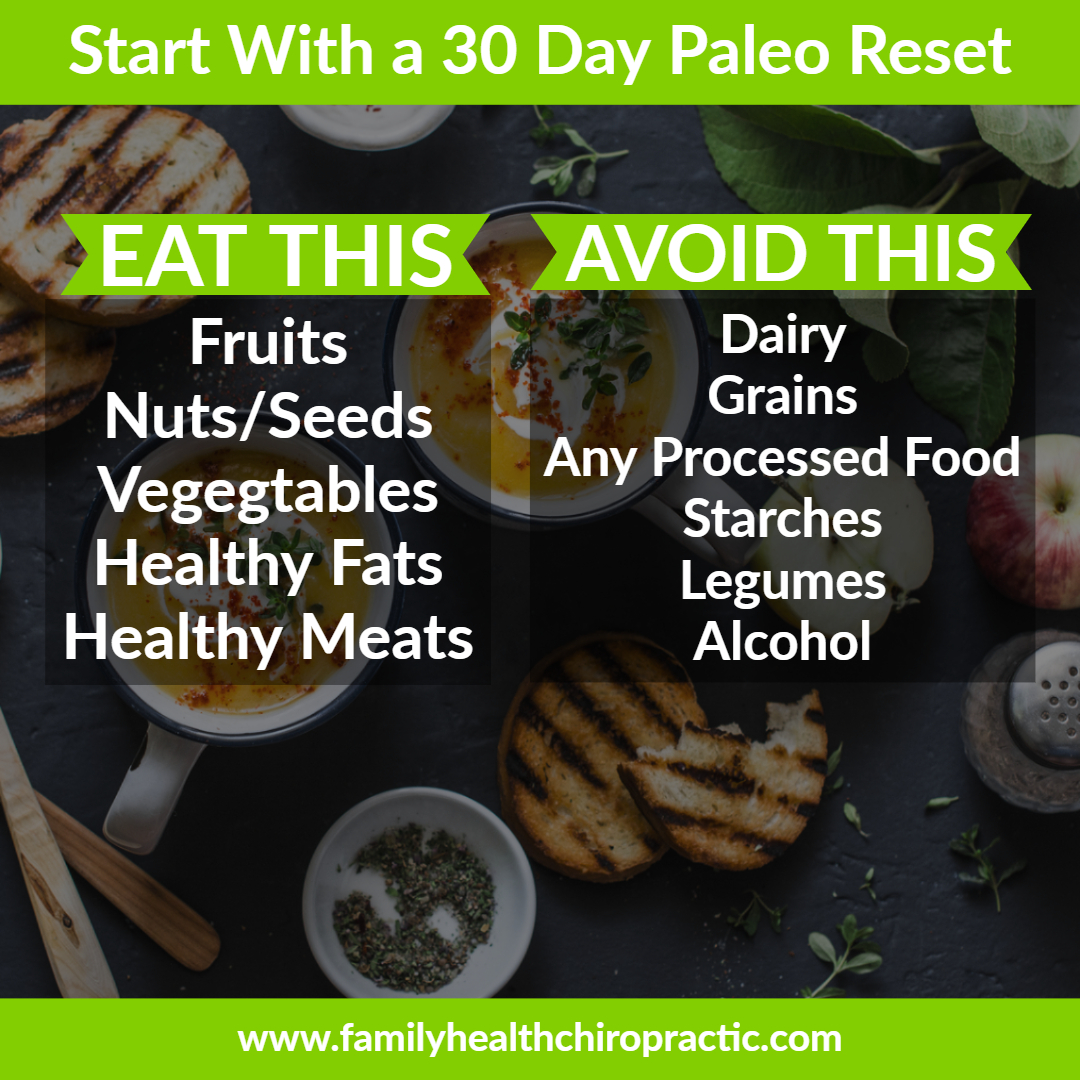How Your Diet Impacts Joint Pain
As a Functional Medicine Doctor, I’ve seen incredible results with patients who were able to successfully implement changes in their diet (alone) and eliminate many of their chronic pain symptoms, whether they were suffering from Neck Pain, Back Pain or some severe autoimmune disease, such Rheumatoid Arthritis, Sjogrens, psoriasis, multiple sclerosis (MS), and more.
It’s amazing to see a person’s health turn around after improving their diet, especially when the disease they’re dealing with had been taking so much of their quality of life away from them.
When it comes to dealing with joint pain, an Anti-Inflammatory Diet is a fantastic way to start seeing a vast improvement of symptoms.
However, a major issue I see frequently is that once someone has seen success on a strict anti-inflammatory protocol, they’re often afraid to try adding back in any foods that are eliminated from the diet.
This is not always the case and it's important to appreciate the fact that not everyone will need to be on this type of diet indefinitely.
In this article, I’ll briefly cover the five major steps to personalizing your own Anti-Inflammatory Diet, in order to have the most flexible and health-promoting diet possible.
1. Start with a 30 Day Reset
The first thing I should mention about inflammation is that simply following an anti-inflammatory diet for just one or two weeks can help you transform your health and identify possible trigger foods.
So if you cannot commit to 30 Days, then at least try 2 weeks or 14 days!
Approximately 80% of people can absolutely transform their health by correcting their diet. Americans are highly inflamed due to their consumption of “food products” that simply aren’t real food.
When the body becomes polluted with inflammatory compounds – industrialized seed oils such as canola, soybean, cottonseed, artificial flavors, coloring, preservatives, highly processed carbohydrates, etc. – a cascade of events is set off.
White blood cells and a few special immune called cytokines are deployed to attack these foreign compounds that you purposely ingest. This is the normal reaction to inflammation and it’s a good thing. It helps the body protect itself and heal.
But when the immune system is shifted out of balance due to repeated attacks, an exaggerated response results and things start to get hairy.
Basically inflammation runs rampant and out of control.
It becomes this chronic, smoldering fire inside the body that contributes to nearly every disease process, including heart disease, cancer, diabetes, weight gain, autoimmunity, mood disorders and yes – Joint Pain.
A 30 Day reset means following the standard Paleo-Diet guidelines of: no grains, no dairy, no legumes, no industrial seed oils, no alcohol, and so on.
I believe that anyone suffering from chronic pain, joint pain, headaches, back pain, etc. should start with the normal Paleo 30-day reset.
2. Optimize Nutrient Intake
Speaking of adequate nutrients, removing foods from your diet isn’t enough to heal from chronic pain.
You need to be purposeful about adding certain foods into your diet to provide the nutrients and building blocks your body needs to repair damaged organs, balance your immune system, and heal the gut lining.
In addition to removing the common food triggers listed above, it’s essential to add in nutrient dense foods like liver, bone broth, copious amounts of colorful vegetables, high quality meats and fats, fatty fish and shellfish, and fermented foods.
Nutrients in liver, fatty fish and shellfish such as vitamin A and D, zinc, choline, and various B-vitamins are essential for balancing the immune response (particularly the t-regulatory cell response), supporting mitochondrial energy production, and supporting the healing of damaged tissues, especially the gut lining. (1, 2, 3, 4, 5)
Fermented vegetables not only provide beneficial probiotics, but also fermentable fibers that can feed the flora that are already in the gut. A healthy gut microbiome is crucial for maintaining a healthy gut lining, thanks primarily to gut bacteria’s ability to produce butyrate, which is important for t-regulatory cell production and differentiation, and can help further balance the immune system. (6)
Bone broth contains gelatin, a protein that contains the amino acids proline, glycine, and glutamine. These amino acids can help heal the gut lining, reduce inflammation, and promote healthy gut integrity. Glycine in particular is known to inhibit immune activity and act as an anti-inflammatory. (7)
That’s why bone broth is one of the major dietary staples of a gut healing, anti-inflammatory diet that is ideal for a person with autoimmune disease.

3. Reintroduce Foods Systematically
The benefits of reintroducing foods are three-fold.
First, being able to tolerate a wide variety of foods is important when it comes to improving your body’s ability to heal.
Second, you’ll have a better understanding of which foods are more crucial to avoid than others.
Third, having a more broad diet can significantly improve your ability to enjoy food both at home and when out to eat, which provides important quality of life benefits.
Reintroducing foods is probably the most challenging part an elimination or anti inflammatory diet. As I mentioned before, it can take hours, days, or weeks for an immune response to kick in to the point where symptoms are returning. Some people will have an immediate and strong reaction to foods they (gluten is a big culprit here) whereas others only have minor increases in symptoms that they may not realize are attributed to a particular food.
The best way to construct a reintroduction protocol for is to first choose which foods are the most important to you to try reintroducing, and then work systematically to bring them back into your diet.
I rarely suggest trying to reintroduce gluten if you have any sort of autoimmune disease, but other excluded foods like dairy, eggs, nightshades, and/or nuts and seeds can frequently be tolerated by those with an autoimmune disease.
In addition, it's been determined that certain food groups should be reintroduced in a particular order.
The best example of this is dairy, where you start by reintroducing ghee, which contains the least amount of milk proteins, then continue with other dairy types in this order: butter, heavy cream, fermented dairy (yogurt and kefir), cheese, and fluid milk.
Other examples include eggs, which should be introduced yolk first, and nightshades, which need to be introduced one-by-one (e.g. potatoes, then tomatoes, then eggplant, and so on.)
You can also reintroduce non-Paleo foods like white rice and other gluten-free grains if desired.
The most important thing to remember here is to reintroduce one food at a time, and to give yourself at least 3 solid days per reintroduction to notice any exacerbations in your symptoms.
This can be a return of your specific symptoms such as joint pain or skin inflammation, or it may be an “unrelated” symptom like gastrointestinal distress or fatigue.
If you’ve eaten the food consistently for three days and you don’t notice any negative side effects, you can generally assume the food is okay for you to eat.

4. Get Tested For Sensitivities
Sometimes the reintroduction phase isn’t enough to discover which foods are causing you problems.
If your symptoms aren’t improving on a strict Paleo diet, or if you’ve gone through the reintroduction protocol and your symptoms start to come back, you may still be eating a food that’s causing an immune response.
In this case, getting food sensitivity testing is a good option to determine exactly which foods are the culprit.
The absolute best food sensitivity testing is done through Cyrex labs, which test for both IgG and IgA antibodies and can detect intolerances to a wide variety of foods.
They’ve recently released a test called Array 10, which covers a great deal of foods in both cooked and raw form.
Another test called Array 4, is the gold standard for identifying intolerance to dairy, eggs, or other foods that are commonly associated with a gluten cross-reactivity response.
And finally, Array 3 is the best recommendation to rule out gluten sensitivities.
It’s important to note that any and all food sensitivity testing is based on your immune systems response to food. This means that if your immune system is dysfunctional, you could get inaccurate results.
And what bodily system has the greatest impact on our immune system? The GI tract.
This is why I recommend a Comprehensive Stool Panel before any food sensitivity testing.

5. Focus on Lifestyle
Last but not least, it's important to recognize that lifestyle habits other than diet, can play a major role in our health outcomes.
We can get so focused on our diet, but it's absolutely essential that we don't skip over exercise, stress, and sleep.
Exercise not only helps us to maintain a health weight, but it's critical for a healthy immune system. Research shows that exercise is important for T-regulatory cell production, and it can also reduce inflammation in people with autoimmune disease. (8, 9, 10, 11)
Chronic stress has also been shown to reduce gut barrier integrity (leaky gut) and can trigger or worsen autoimmune and inflammatory disorders.
One study even found that chronic psychological stress is associated with the body losing its ability to regulate the inflammatory response. (12) The researchers even theorize that the stress connection may explain why women have a higher prevalence of autoimmune disease than men do.
Minimizing stress is a non-negotiable for anyone experiencing joint pains.
There are dozens of different ways you can manage stress, from yoga, to meditation, to planned social occasions with loved ones. Petting a dog, getting a hug from a significant other, or a monthly massage can all be stress relieving activities as well.
Finally, sleep is another non-negotiable factor. Chronically poor sleep is not only a source of stress, but also a source of inflammation. (13) When circadian rhythms get misaligned from weeks or months of inadequate sleep, inflammatory immune cells are produced excessively, leading to an increase in “friendly fire” against the body’s own tissues.
Get Help When You Need It!
By following these tips, I believe the majority of people with joint pain, inflammation or an autoimmune disease will see significant improvements in their symptoms.
That said, there are those who will need additional tweaks, deeper testing, and personalized changes to their diet, supplement, and lifestyle plan before they see the improvements they’re looking for.
This is especially true for people with severe gut issues, long term neurological involvement, or compounding issues like surgical intervention or pharmaceutical dependency.
For those who need in depth testing and/or pharmaceutical intervention, I strongly recommend finding a qualified integrative doctor or functional medicine doctor to work with.





